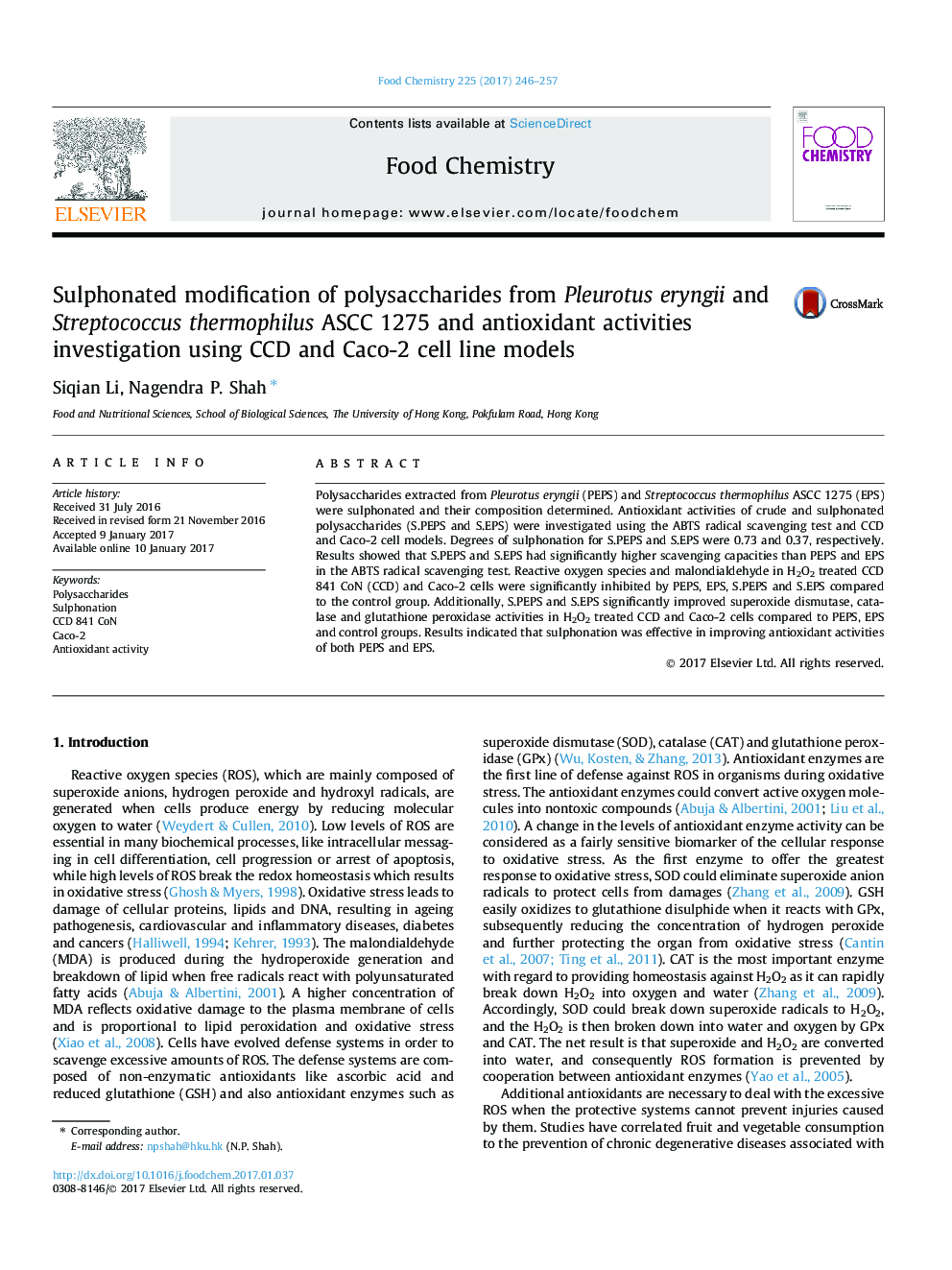| Article ID | Journal | Published Year | Pages | File Type |
|---|---|---|---|---|
| 5133922 | Food Chemistry | 2017 | 12 Pages |
â¢Pleurotus eryngii polysaccharides (PEPS) were extracted and sulphonated (S.PEPS).â¢S. thermophilus exo-polysaccharides (EPS) were extracted and sulphonated (S.EPS).â¢Antioxidant activities of PEPS, EPS, S.PEPS and S.EPS were tested on cell models.â¢Antioxidant activities of PEPS and EPS were improved after sulphonation.
Polysaccharides extracted from Pleurotus eryngii (PEPS) and Streptococcus thermophilus ASCC 1275 (EPS) were sulphonated and their composition determined. Antioxidant activities of crude and sulphonated polysaccharides (S.PEPS and S.EPS) were investigated using the ABTS radical scavenging test and CCD and Caco-2 cell models. Degrees of sulphonation for S.PEPS and S.EPS were 0.73 and 0.37, respectively. Results showed that S.PEPS and S.EPS had significantly higher scavenging capacities than PEPS and EPS in the ABTS radical scavenging test. Reactive oxygen species and malondialdehyde in H2O2 treated CCD 841 CoN (CCD) and Caco-2 cells were significantly inhibited by PEPS, EPS, S.PEPS and S.EPS compared to the control group. Additionally, S.PEPS and S.EPS significantly improved superoxide dismutase, catalase and glutathione peroxidase activities in H2O2 treated CCD and Caco-2 cells compared to PEPS, EPS and control groups. Results indicated that sulphonation was effective in improving antioxidant activities of both PEPS and EPS.
